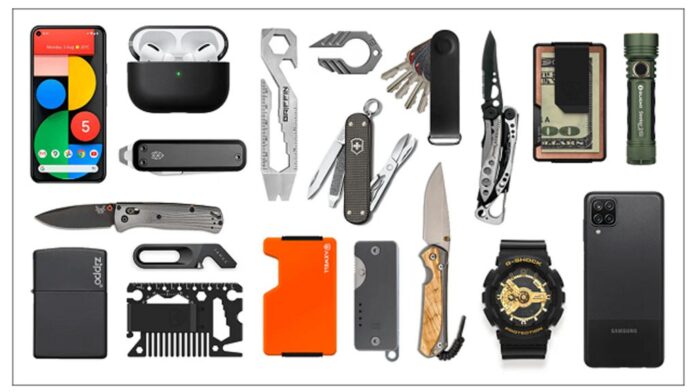Every Day Carry Has Morphed into the New Self-Defense
What do you keep in your pockets or bag every day? For millions, the answer is more than just keys and a phone. Known as Everyday Carry—or EDC—this practice has evolved from a simple convenience habit into a practical self-defense philosophy, equipping people to handle life’s uncertainties with preparedness and confidence.
At its simplest, EDC refers to the collection of items people carry daily to solve problems, stay safe, and improve convenience. A wallet, watch, or pen may fit the definition, but so do flashlights, multitools, or pocketknives. What makes EDC unique is the intentionality: enthusiasts carefully curate their gear not only for utility but also for efficiency and self-defense.
The modern EDC movement traces its roots to the late 1990s. This was the era when reality-based defense training gained traction, promoting practical skills for real-world scenarios rather than traditional martial arts or sport fighting. With the advent of EDC and reality-based defense, the late ’90s embodied a zeitgeist of personal preparedness, practicality, and self-reliance. People were looking for tools and skills that could provide an advantage in emergencies as well as in the ordinary frictions of daily life.
Self-defense has always been a strong current within EDC. Many practitioners carry handguns, knives, pepper spray, and tactical pens.The logic is straightforward: a small, easily carried tool can make the difference in a critical moment. A folding knife may open boxes one day and cut through a seatbelt after a crash the next. A flashlight may illuminate a dark stairwell—or disorient an attacker. A handgun offers the ultimate last line of defense. Alongside defensive gear, many EDC setups also include medical supplies like tourniquets or trauma kits, compact food and water, and signaling tools such as whistles or mirrors—essentials that turn an ordinary pocket into a lifeline when crisis strikes.
Originally popular among military personnel, law enforcement, and survivalists, EDC soon spread to a wider audience. Urban commuters adopted compact flashlights for late-night walks. Office workers carried discreet multitools for small fixes. College students added notebooks, chargers, and water bottles to their kits. The unifying idea was simple: preparedness empowers.
Why does EDC matter? Advocates argue that it makes daily life smoother and safer. Having a tool at hand—whether to stop bleeding, signal for rescue, or defend against an assailant—reduces reliance on chance and circumstance. Beyond practicality, there’s also reassurance. As reality-based defense expert WR Mann (Defensescience.com) explains, “Everyday Carry isn’t about paranoia—it’s about options. When life surprises you, having the right tools on hand can turn a dangerous situation into a survivable one.”
Today, EDC is both functional and cultural. Online communities showcase pocket layouts with the same pride others reserve for fashion or photography. Manufacturers now design gear specifically for this audience, blending rugged performance with minimalist style. What began in the zeitgeist of the 1990s has evolved into a mainstream lifestyle—one that reflects not only what we carry, but how we choose to face the unexpected.


